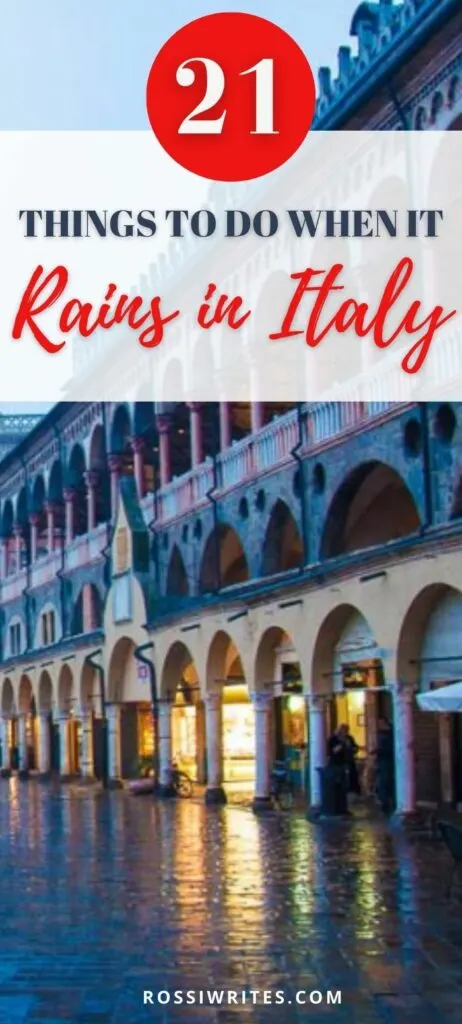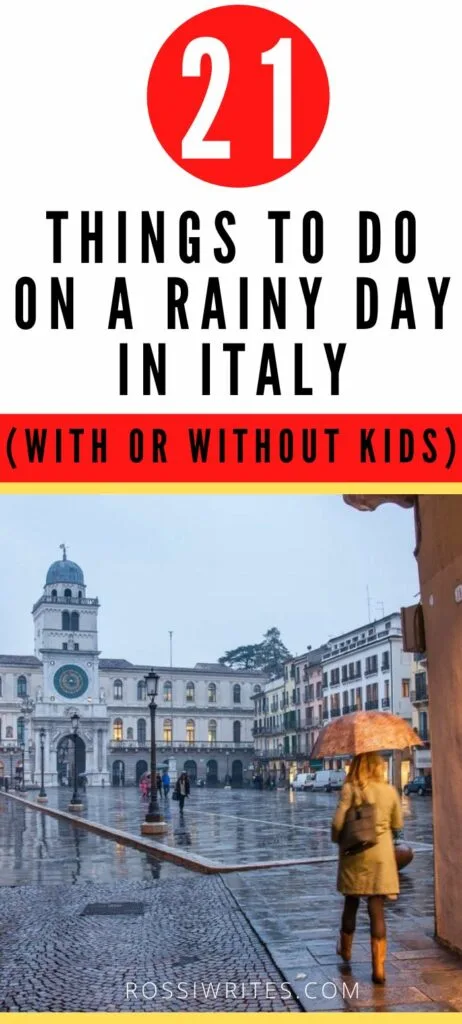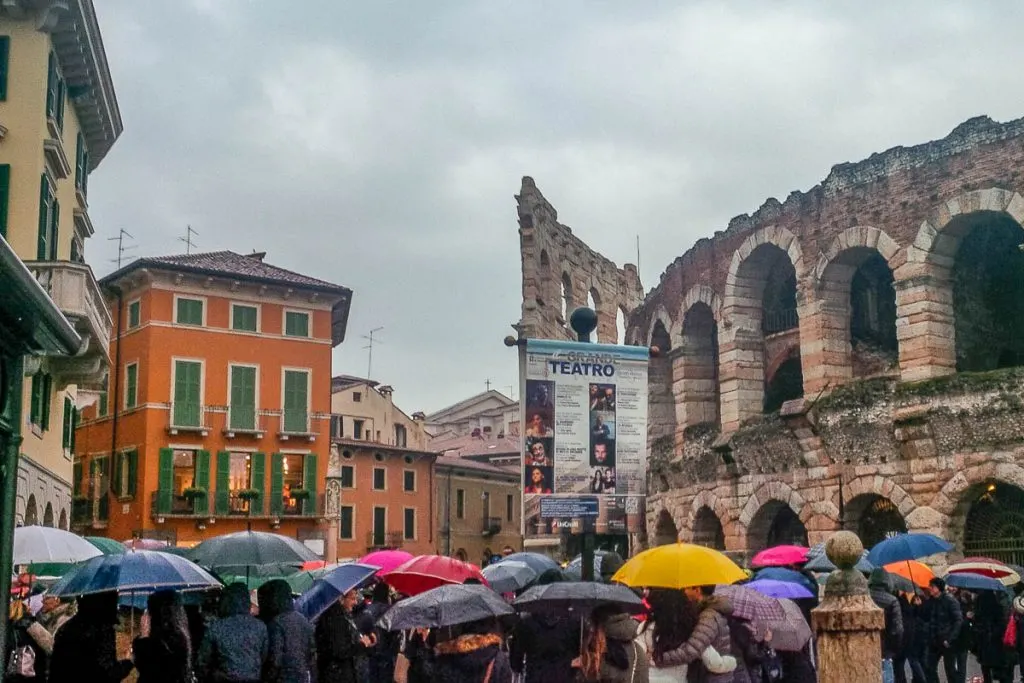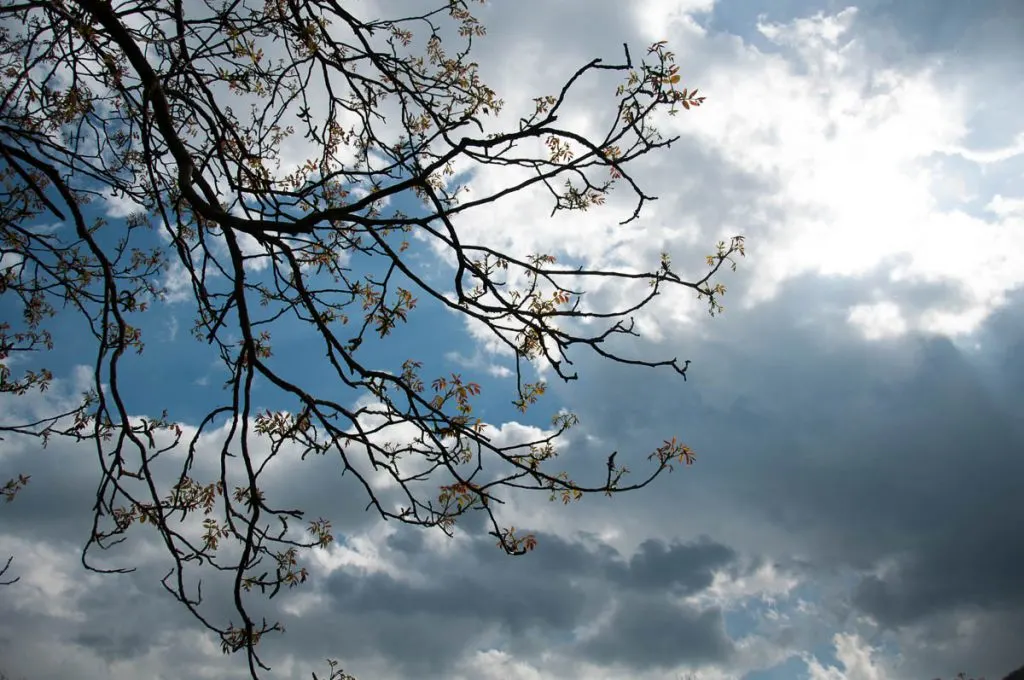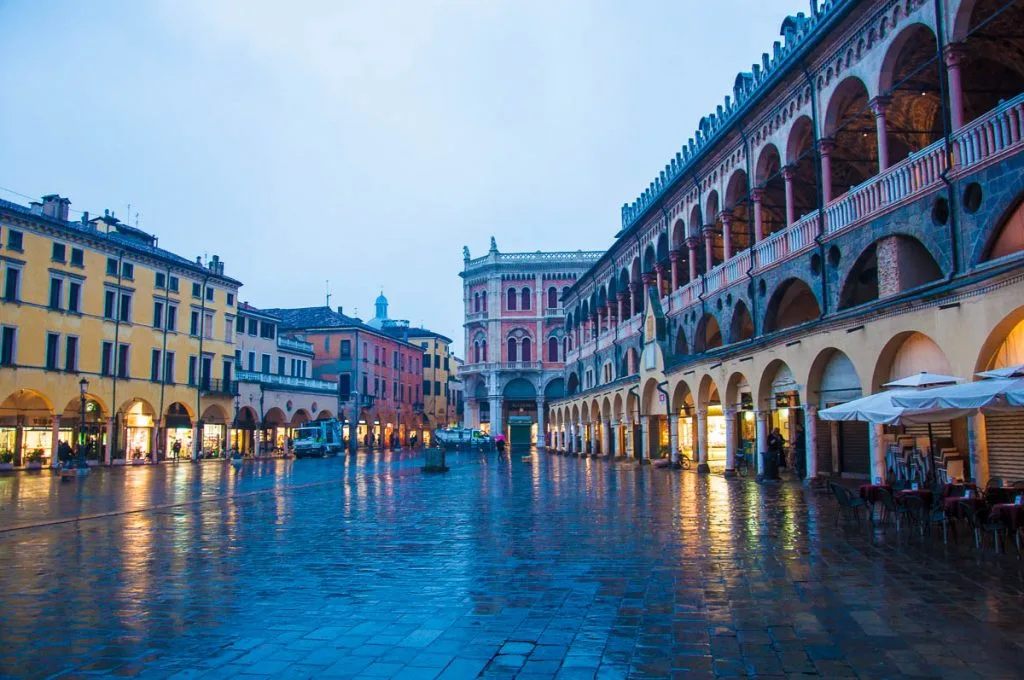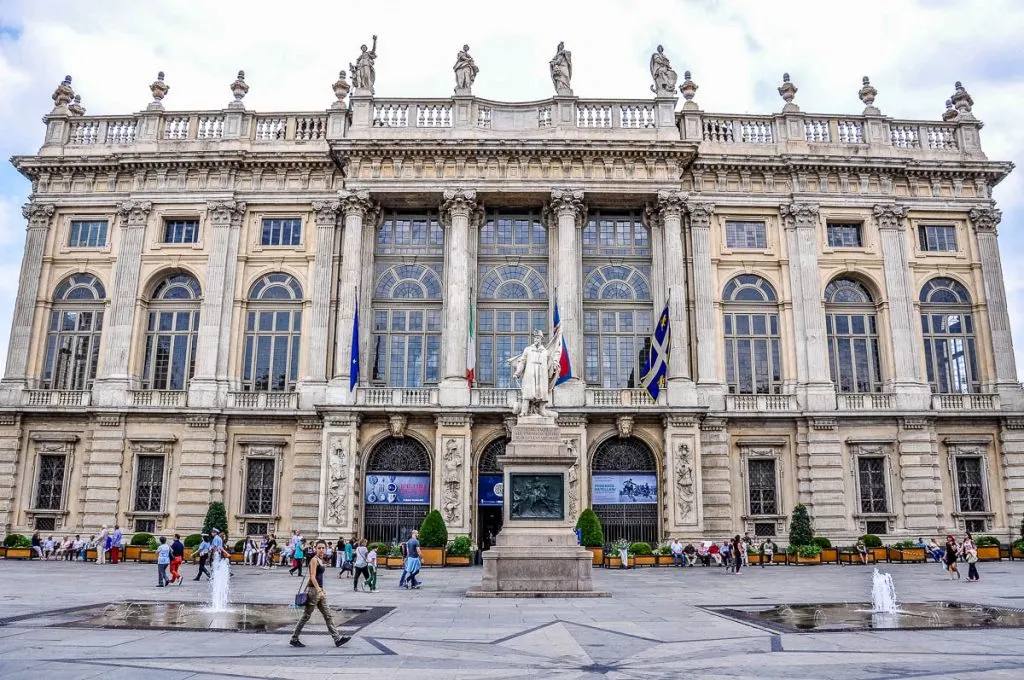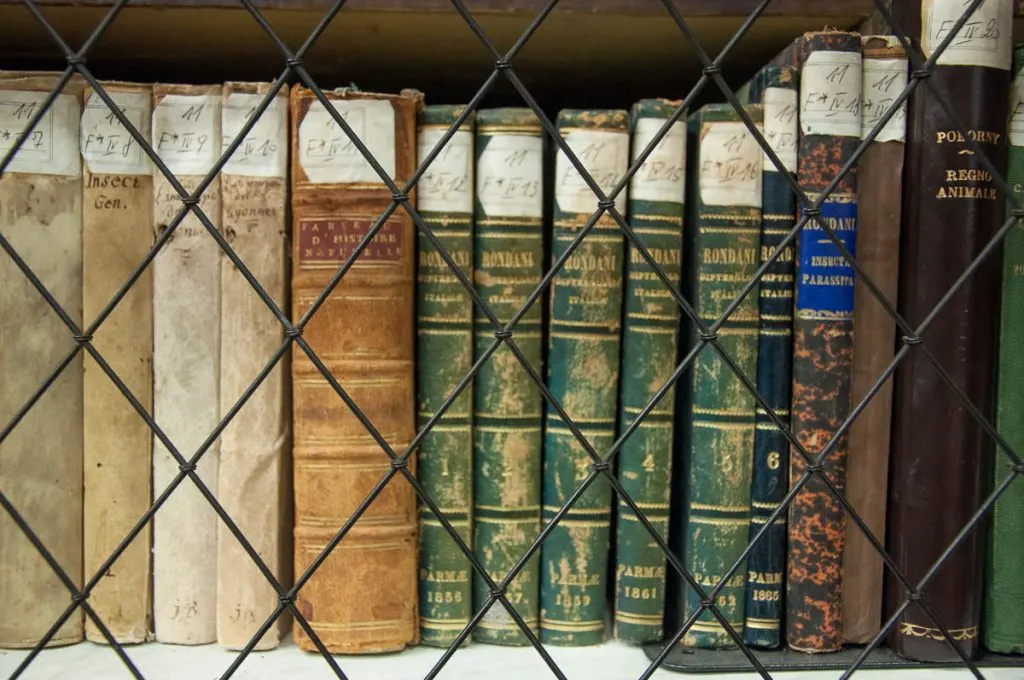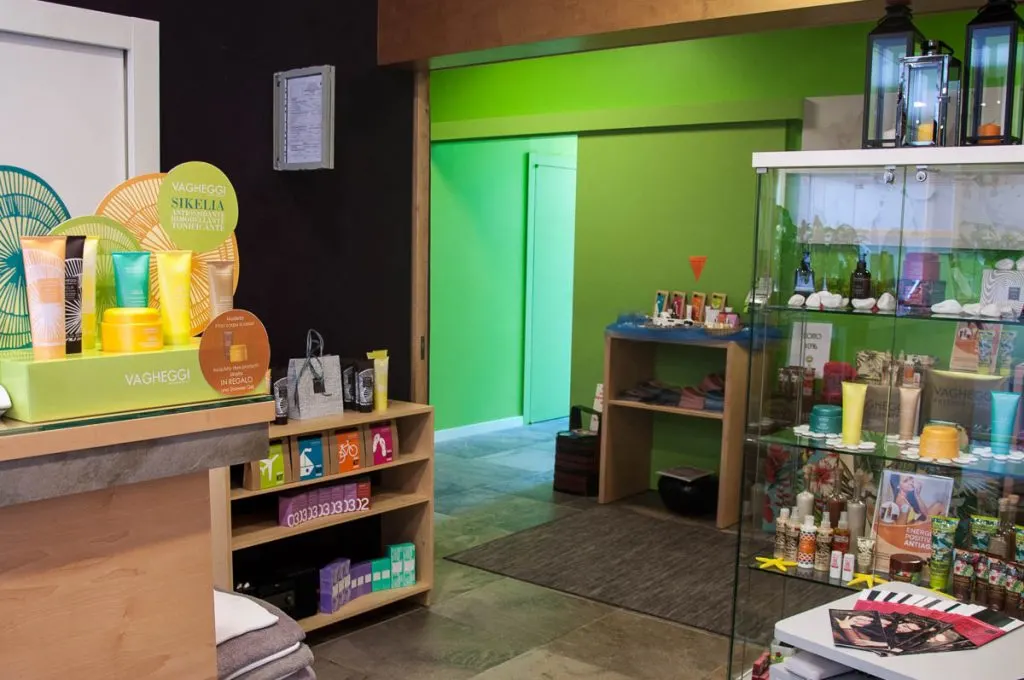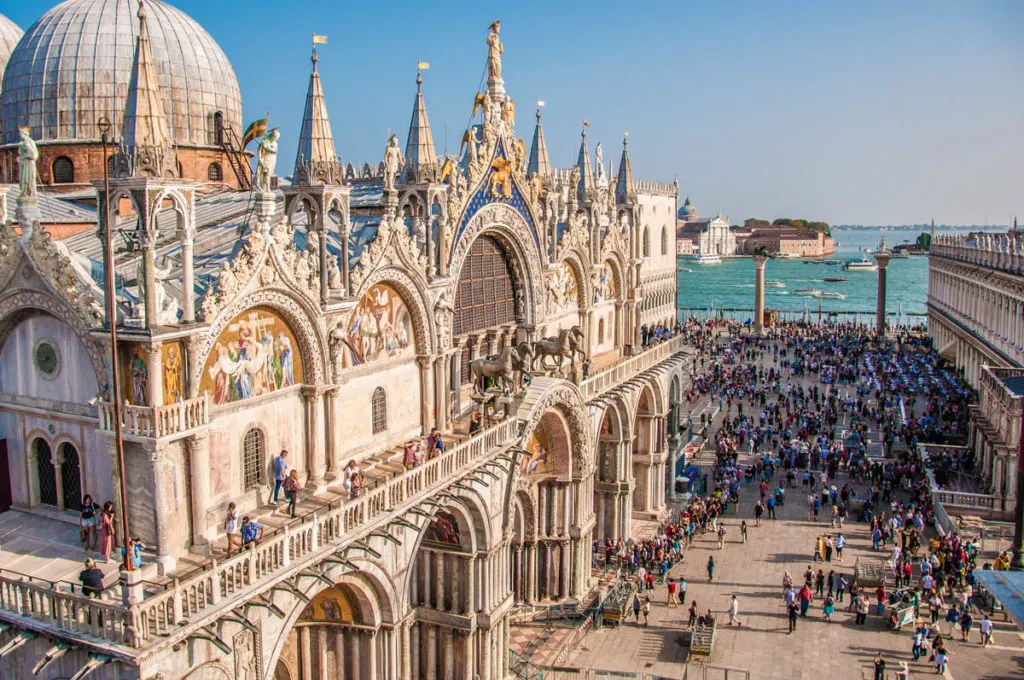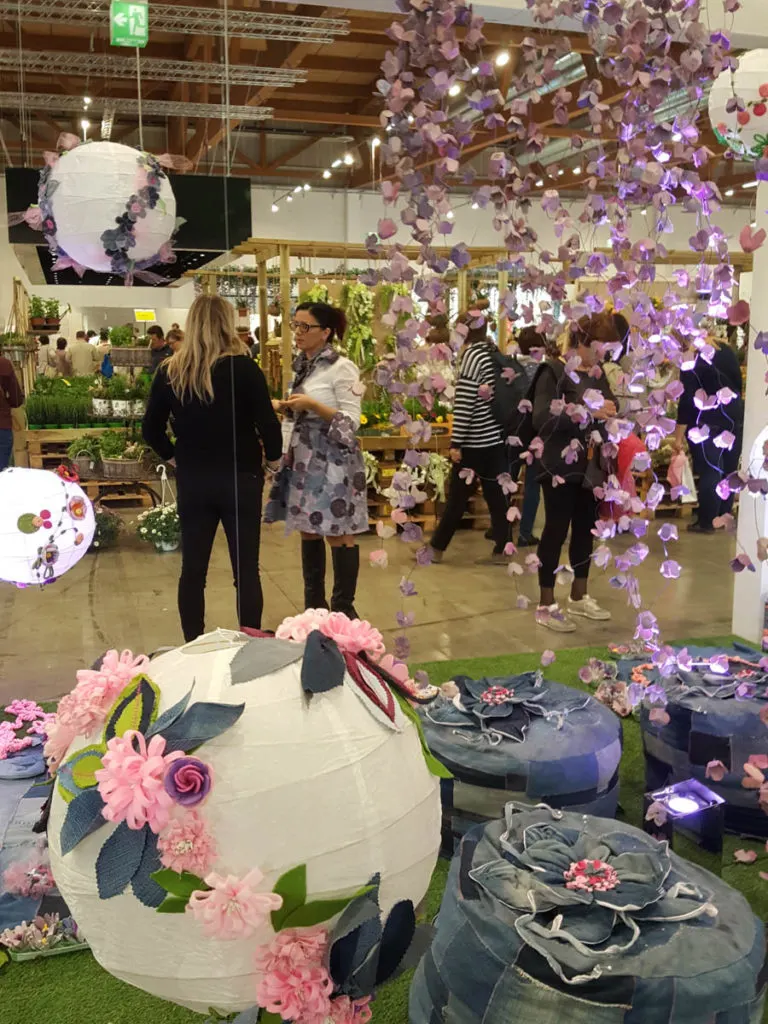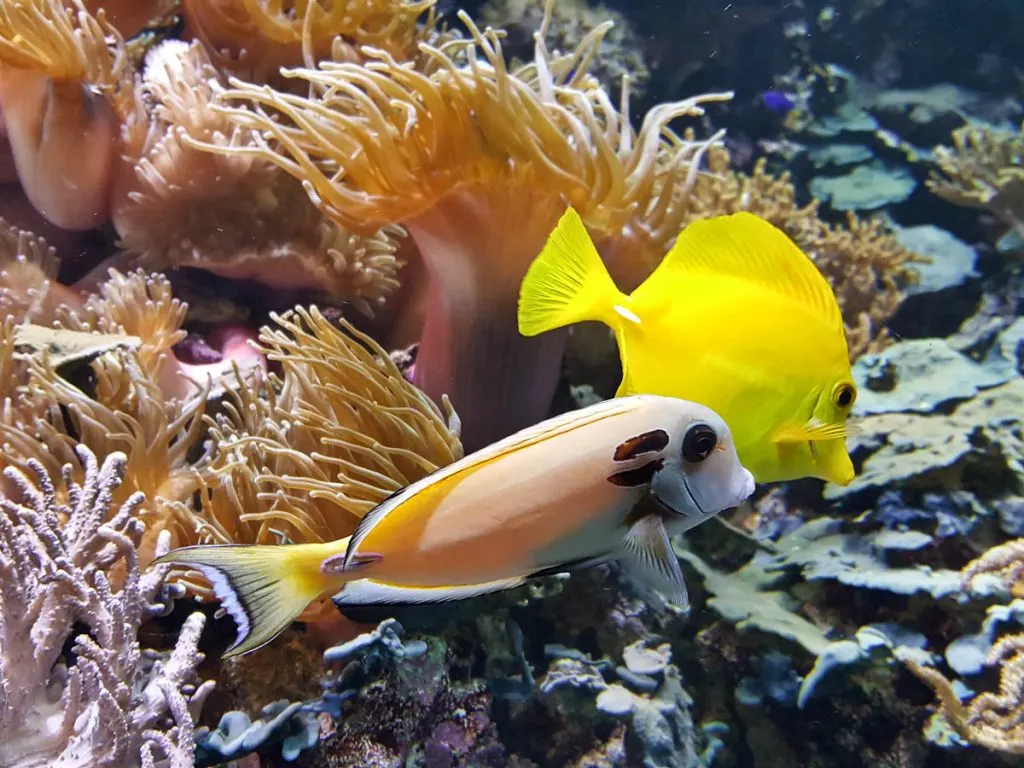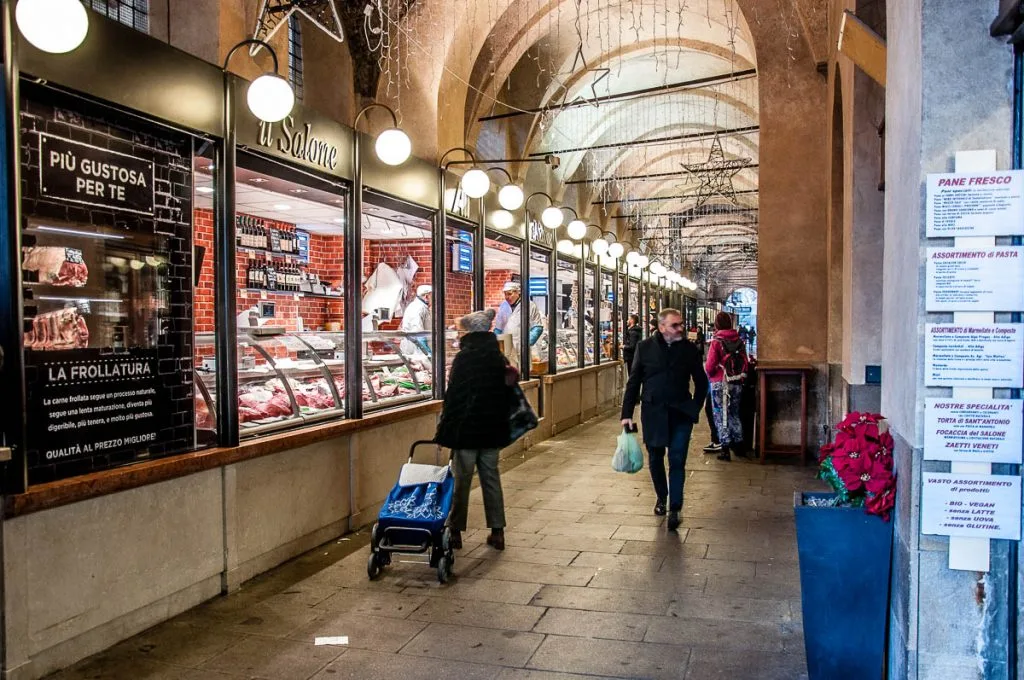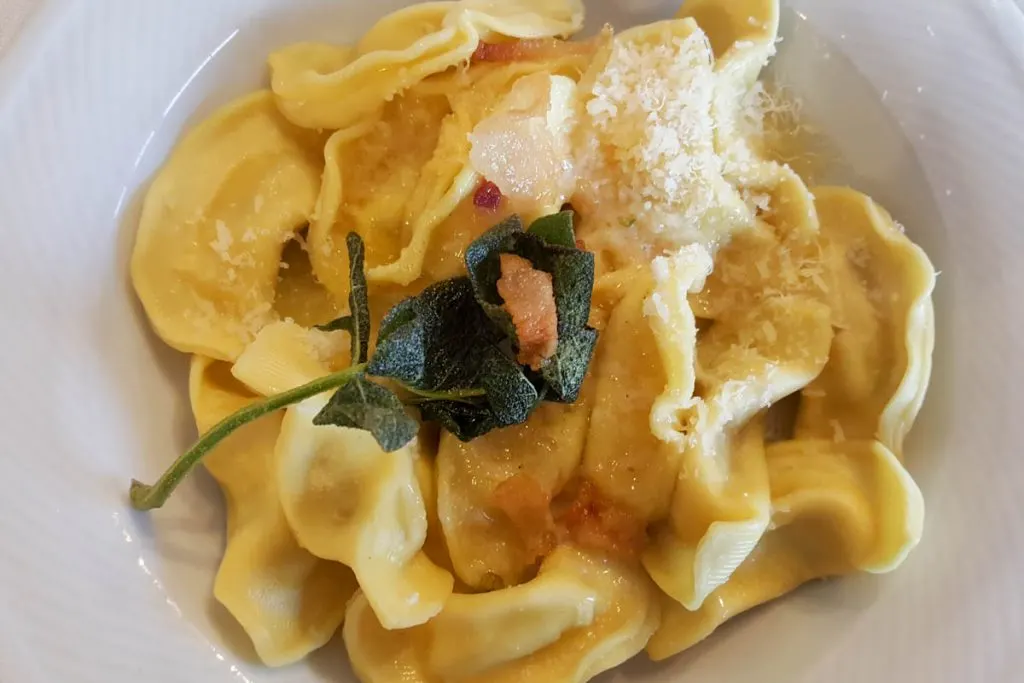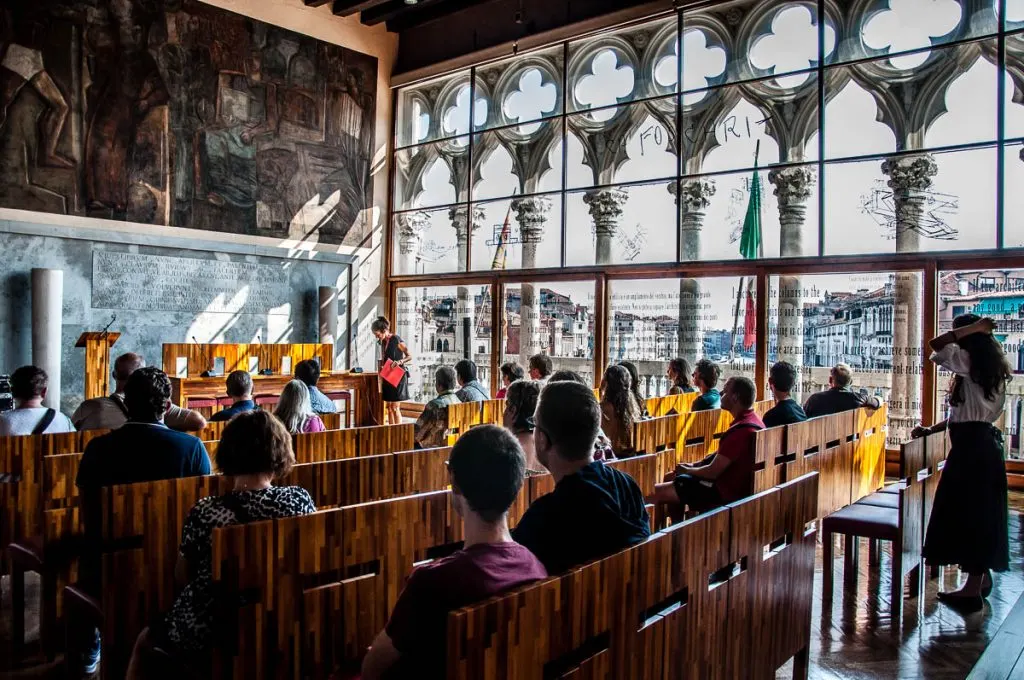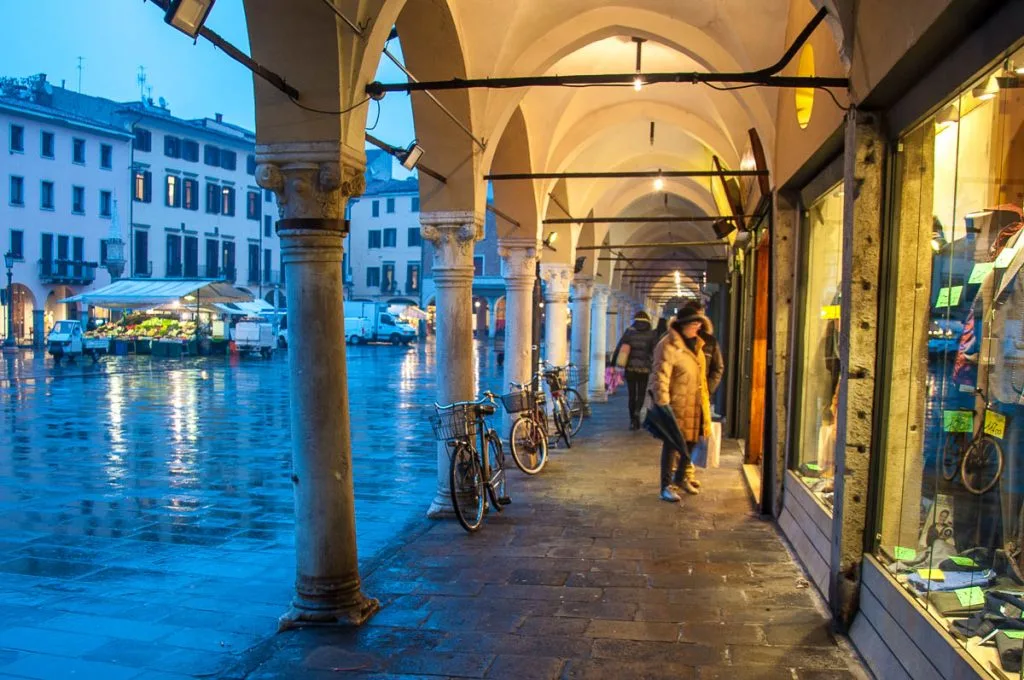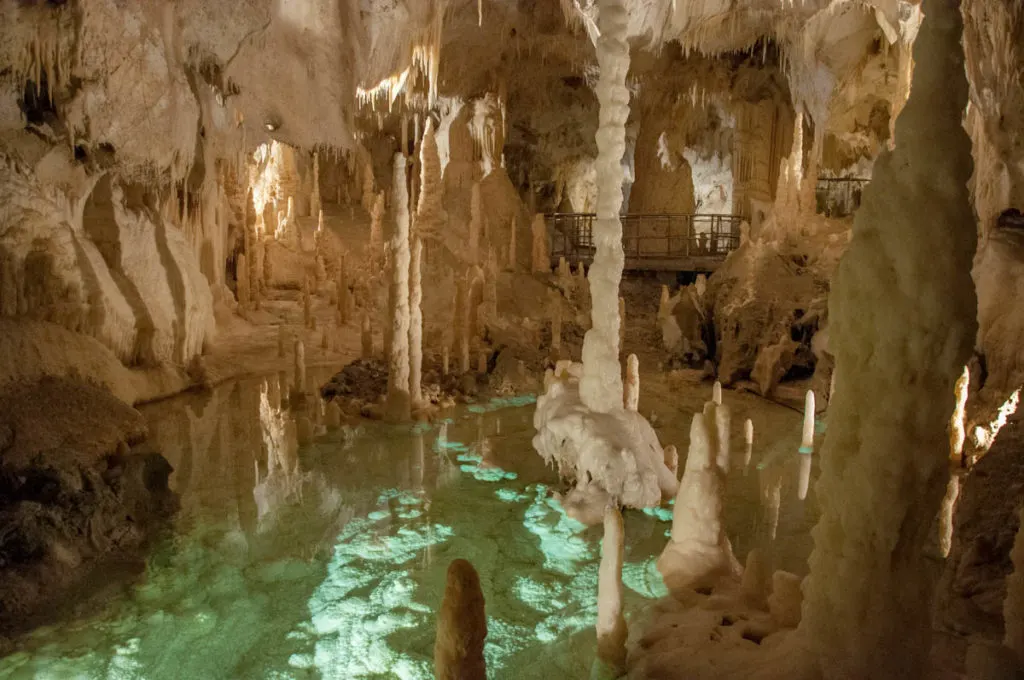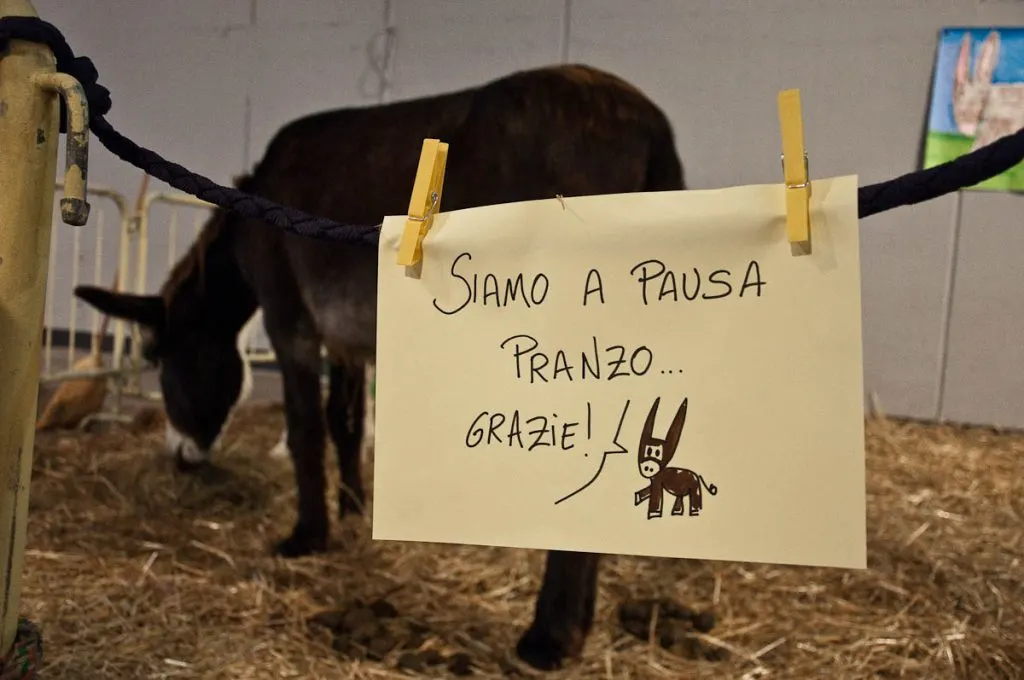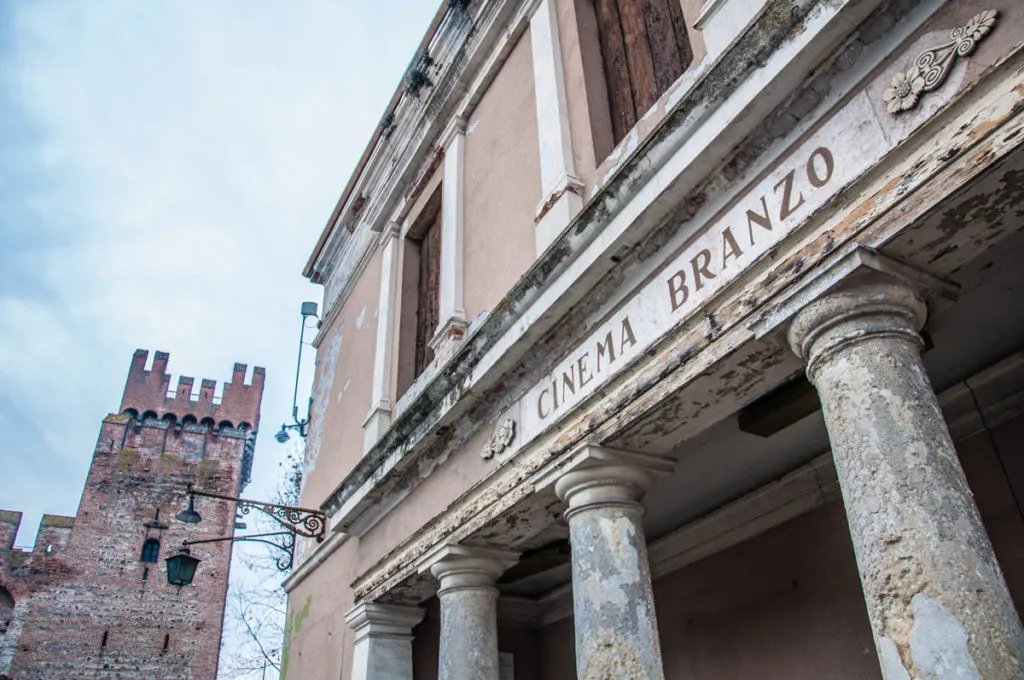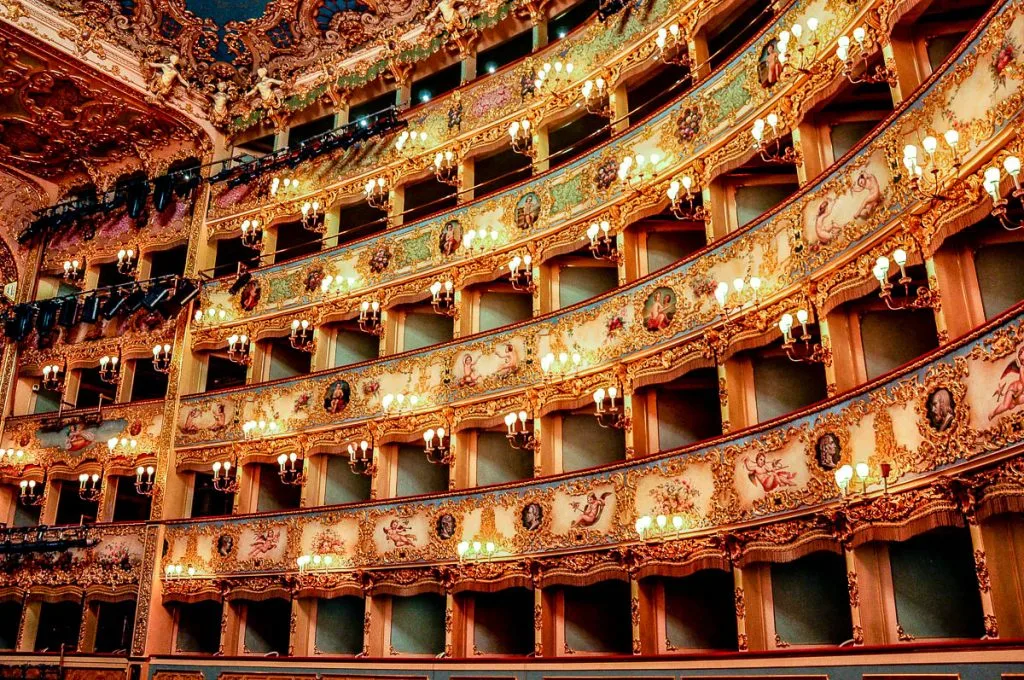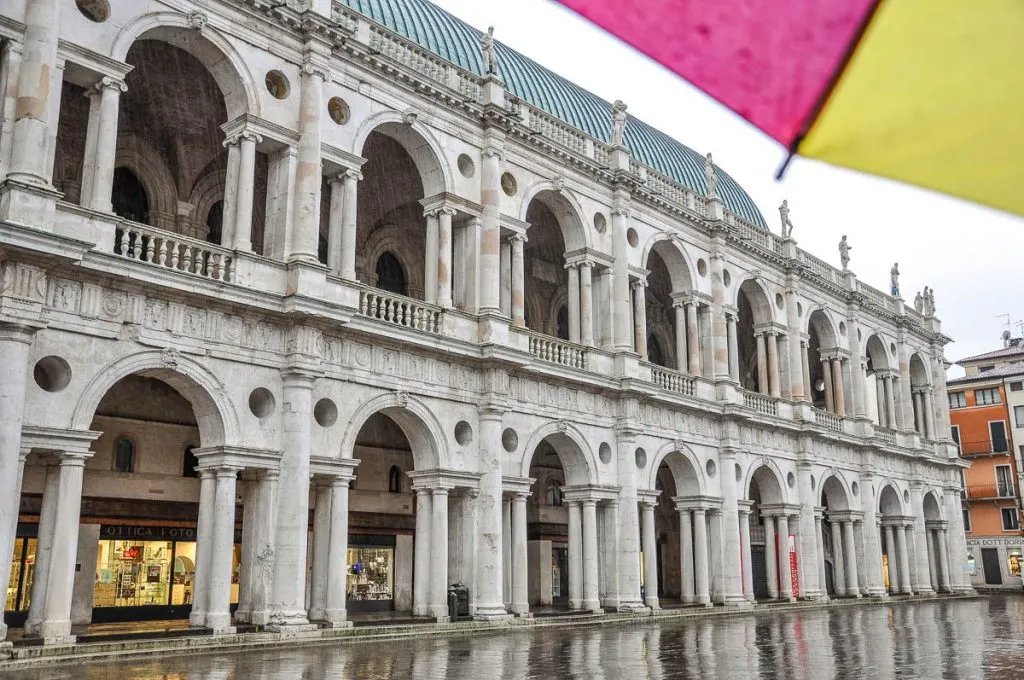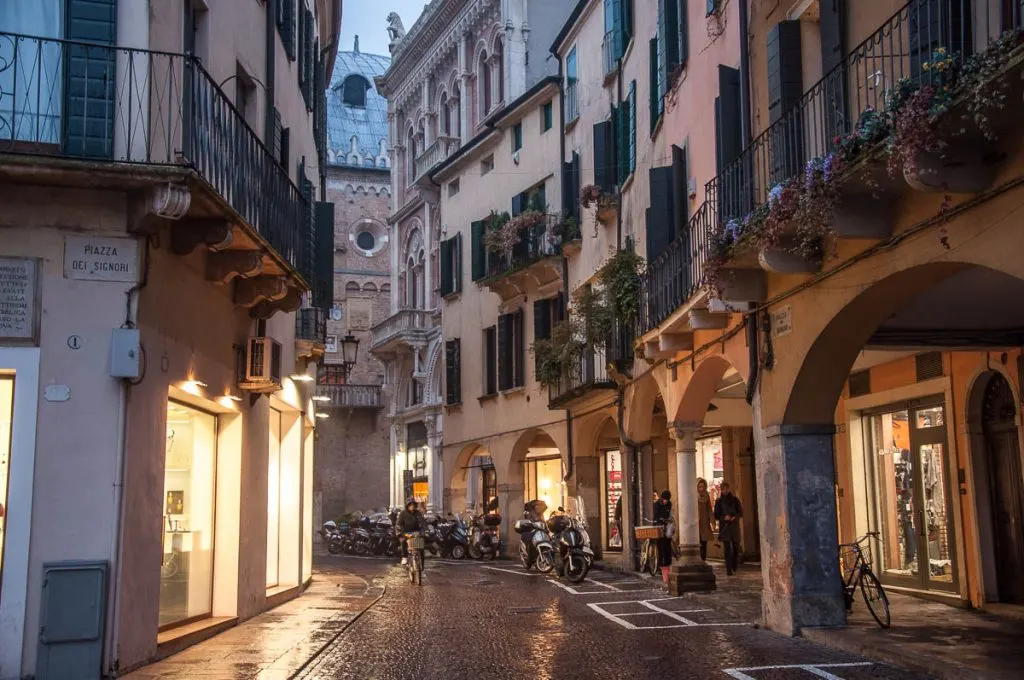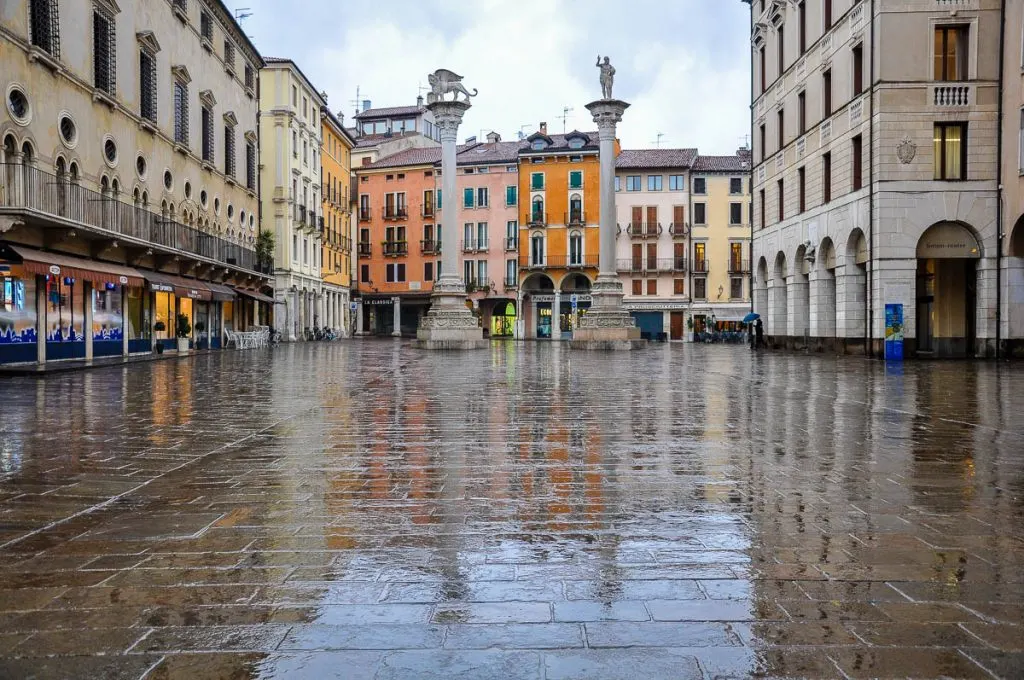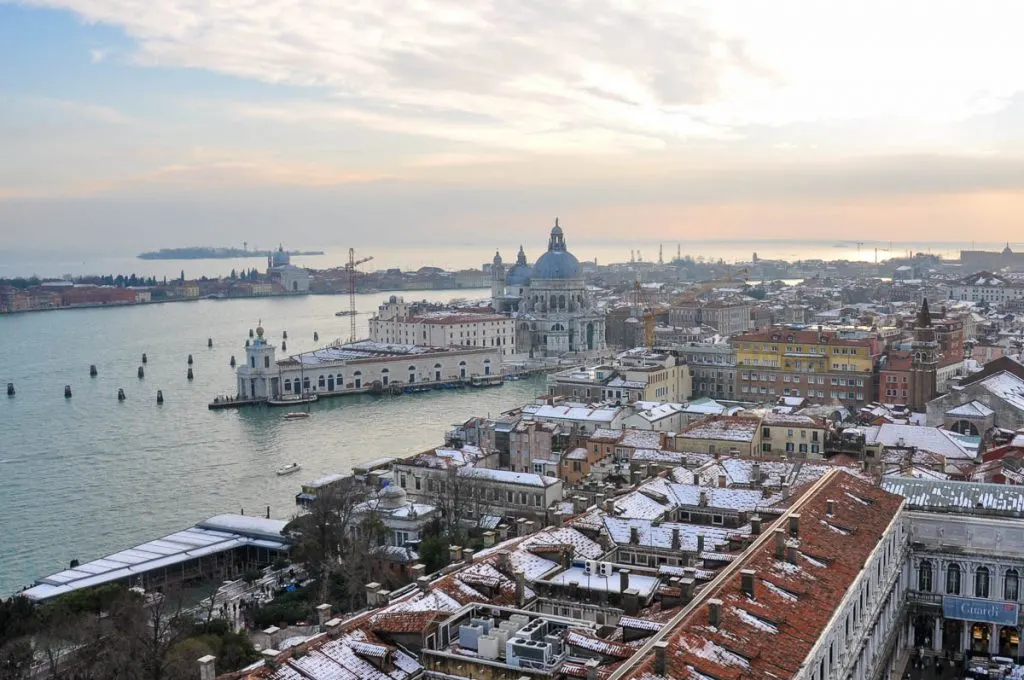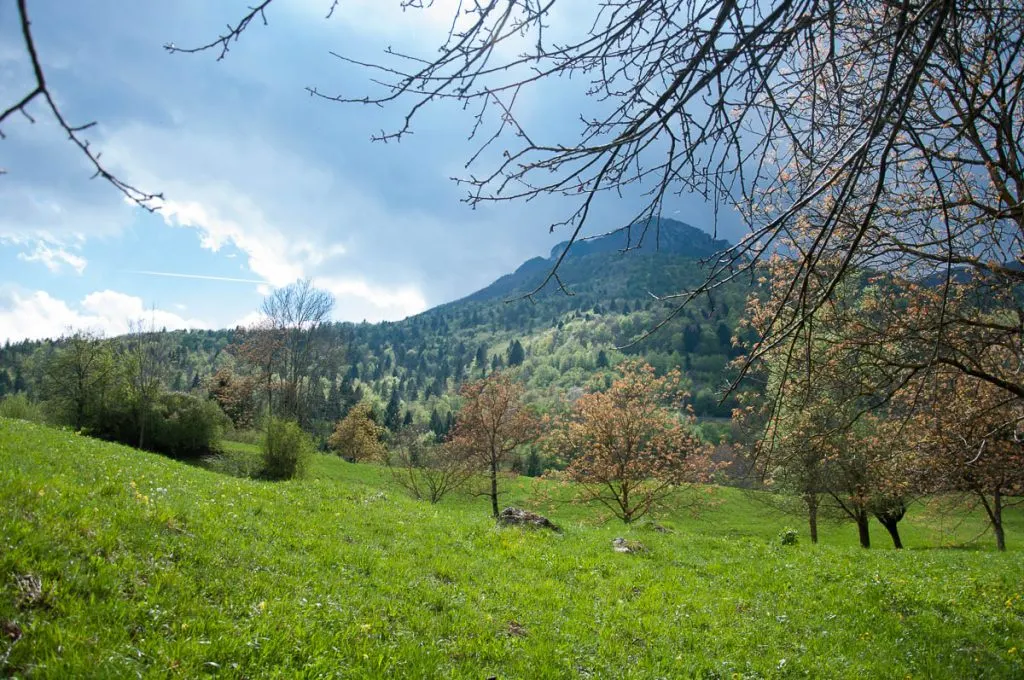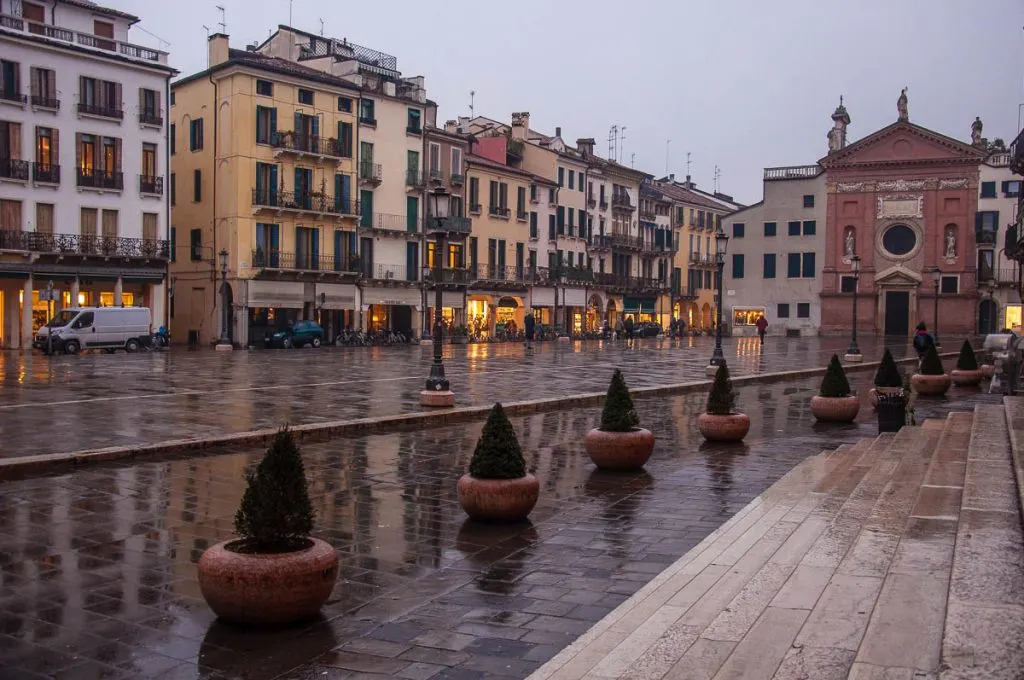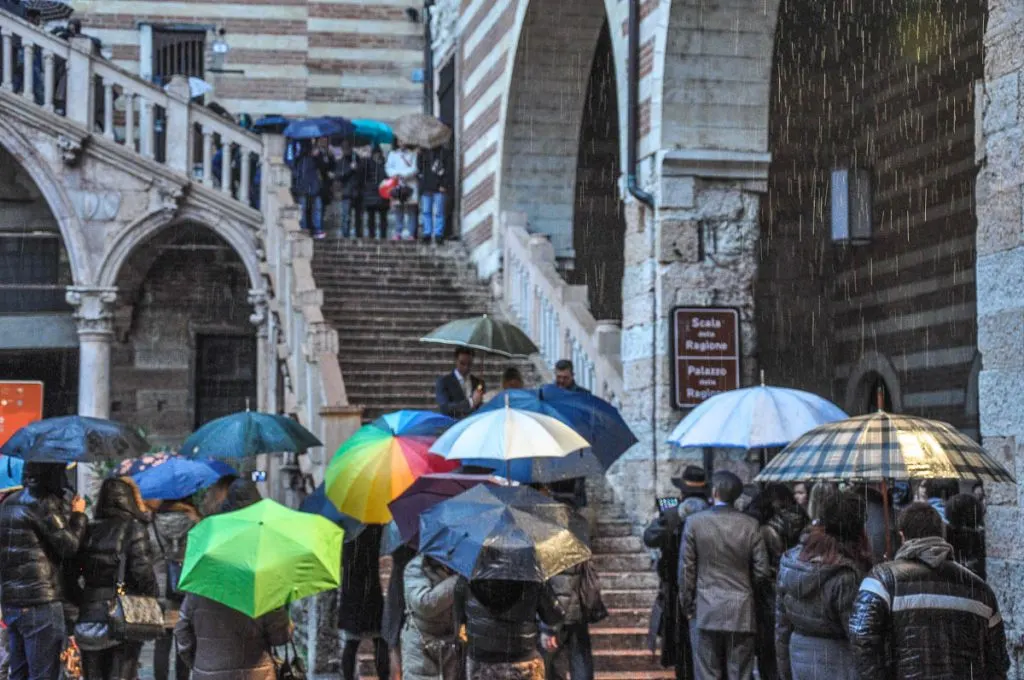Rain in Italy is a fact of life and it does pay to be prepared with ideas for things to do if a rainy day happens during your Italian holiday. Especially, if you are travelling with kids!
The good news is that Italy is famous for its sunny warm weather. It doesn’t rain that often here at all.
Rome, for example, has on average 218 sunny mornings and 232 clear evenings per year. The figures for Venice are, respectively, 188 and 201. Yet, there are moments in Italy when the skies open and it feels like the rain will never end.
Rainy days here are mostly an occurrence in spring and autumn. November is traditionally Italy’s wettest month. And then, in April, May, and October there may be some torrential rains, too. While most of the time the horizon clears within a couple of hours, there are still occasions when the rainy weather can last a few days.
Plus, summer may bring some thunderstorms. Especially in Italy’s north. Often, it all happens overnight. So, when you wake up in the morning and throw open the curtains of your Italian hotel room, you are greeted by a gorgeous sunny view perfectly adorned with fluffy white clouds. Just like in a painting by an Italian master.
Sometimes though, the skies look grey and overcast. As if they had taken their hint from Giorgione’s famous painting Tempest instead. Then, the rain starts and you feel like all your efforts to plan a meticulous Italian trip have been in vain.
Don’t take it personally! And don’t shake your fist at the sky. It doesn’t help. The rain will stop when it stops. It may be a quick spring shower just to make the historic centres of the Italian cities and towns feel nice and fresh. Or it may be a week-long deluge with thunders and lightning, rivers running high, and huge raindrops splattering on windowsills in a never-ending rhythmic dance.
Don’t despair! As long as you have a plan in place for things to do, see, and enjoy in Italy on a rainy day, you will still have a wonderful time in this beautiful historic country.
This is where this blog post comes in very handy.
To help you out, I have written 21 practical ideas for things to get up to on a rainy day in Italy. It doesn’t matter if you are travelling solo, with a friend or as a family. The first-hand tried and tested tips in this blog post are easily adapted to all sorts of travel circumstances and personal interests.
Each entry on the list also has a little section specifically tailored to kids. Fun things to do in the rain are not that difficult to come across in Italy.
From seeking refuge in museums, galleries, and aquariums to shopping for artisanal goods and using the services of a local guide to show you all of the best inside places, there is a whole host of suggestions that will help you outsmart the Italian weather and keep you (and your kids) dry.
At the end of this blog post, I have also included some practical information about Italy’s weather, Italy’s rain etiquette, and what you need for a rainy day in Italy. I hope that all these details will come in very handy if a bout of rain (or snow, for that matter) catches you by surprise during your time in Italy.
Have a look!
Rain in Italy: 21 Things To Do on a Rainy Day in Italy (With or Without Kids)
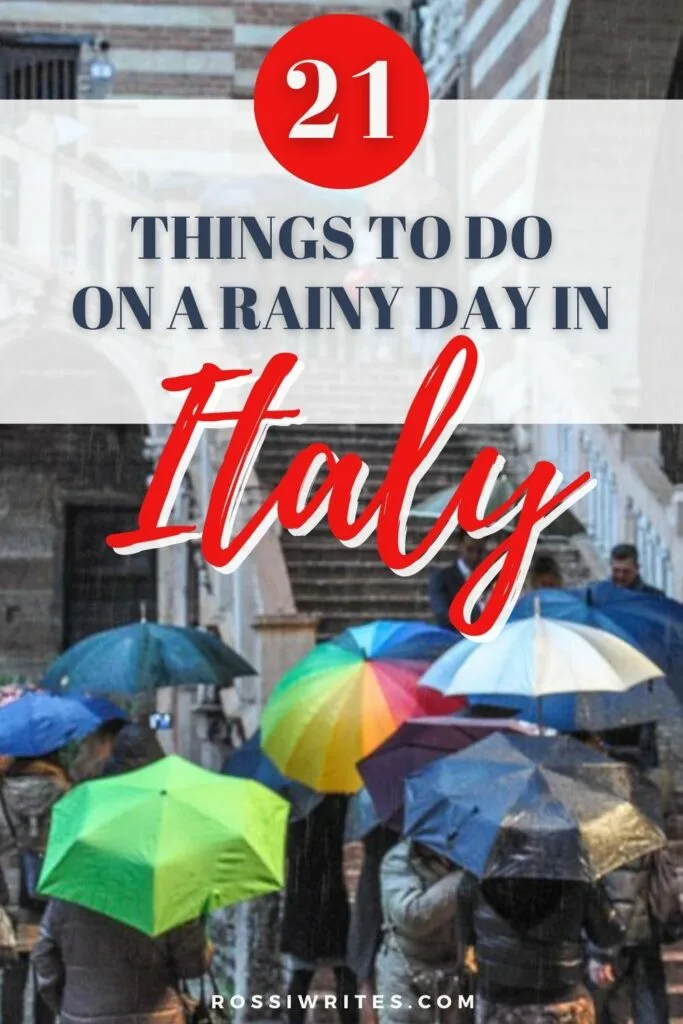
1. Make It a Museum Day
The easiest way to escape the rain in Italy is to head to the nearest museum or two. In a country with 3,847 museums, galleries, and collections (according to Italy’s National Institute of Statistics), there is a never-ending list of riveting places to visit in order to learn about art, history, design, and food.
From the world’s most famous museums and galleries like Turin’s Egyptian Museum and Florence’s Uffizi Gallery to off the beaten track collections which are incredibly rich in artefacts (for example, the Atestino Archaeological Museum in the walled town of Este), there is always yet another museum in Italy you simply need to see.
So, do it while simultaneously escaping the rain!
With Kids: There are some amazing museums in Italy to explore with kids on a rainy day. From MUSE – The Science Museum of Trento to Esapolis – The Living Museum of Insects, Silkworms and Bees in Padua and the National History Museum in Venice, there are many options to keep curious kids entertained for hours when it rains outside.
A personal favourite of mine is the Museo della Civilta Contadina Carlo Etenli. You will find it huddled in the Berici Hills just outside Vicenza in Northern Italy. In a series of huge rooms, this museum houses an incredible collection illustrating Italian agricultural and village life over the last two centuries.
2. Head to a Historical Library or a Bookshop
If you love books, you will be in heaven in Italy. There are many historical libraries dotted all over the country which can be visited on a guided tour or individually. Often nestled in lavish buildings which are beautiful to look at and learn about, these libraries have rich collections of illuminated manuscripts and precious first editions.
Specialised exhibitions, events, and even concerts are often organised in Italy’s historical libraries, too. It pays to keep an eye on their official websites for news about forthcoming events. This information may come in handy should a sudden downpour spoil your plans.
Here are some of the oldest libraries in Italy for your interest:
- Biblioteca Angelica in Rome,
- Biblioteca Ambrosiana in Milan (get a ticket for the library’s worldwide famous Pinacoteca),
- Marciana National Library in Venice,
- National Library of Naples,
- Historic Rooms and Library of the Archiginnasio of Bologna (click for a skip-the-line tour),
- Biblioteca Marucelliana in Florence, and
- Biblioteca Capitolare in Verona – considered to be the world’s most ancient library in the field of Latin culture.
Yet, there are dozens if not hundreds of historical libraries all over Italy. Every Italian city, town, and monastery has a rich collection of manuscripts, books, and periodicals offering a glimpse into history, philosophy, and art.
In addition to historical libraries, in Italy, you will also find many curious bookshops where you can spend an hour or two browsing through new and old editions of exciting books. From the tiny bookshops of Venice where knowledgeable booksellers will recommend rare books about Venetian history to the modern bookshops of Milan and Rome, books are everywhere in Italy.
Even if you don’t speak Italian, don’t be discouraged to visit these exciting places. Often, you will find books and periodicals in English and other languages being sold, too.
With Kids: Use a rainy day in Italy to head to the nearest library and/or bookshop with your kids. Italian libraries often organise reading events for children and usually have a room with books for the little ones to choose from. Often, they have kids’ books in several languages, too. For example, try Biblioteca Ragazzi in Verona and the Biblioteca per Ragazzi in Vicenza.
In the Italian bookshops, you will find a large selection of books for kids of any age. There are even some lovely guidebooks especially developed for kids in order to guide them through the history and sights of Italy.
Try Pimpa’s city guides for kids (Pimpa being a popular cartoon dog in Italy) in English. They are well-written, have cute illustrations, and introduce kids in a fun way to many important Italian cities: Rome, Venice, Bologna, Milan, Modena, Florence, Turin, Mantua, Genoa, and Ravenna.
3. Relax at a Spa or Soak in Thermal Baths
If it’s going to rain while you are in Italy, take any opportunity to get wet. Just not in the cold rain outside but in a hot mineral water pool inside.
Famous for its spa culture since Etruscan and Roman times, Italy has many mineral water springs feeding excellent spas and thermal baths which don’t cost the earth to access.
You can easily get a three-hour or a daily pass for an independent spa or the spa of a luxury hotel for anything from 20-30 euros upwards. This way, you will get access to all sorts of facilities like sauna, Turkish bath, heated benches, emotional showers, and a Kneipp trail.
Thermal baths (called terme in Italian) are a big thing in Italy. Usually, they combine spa experiences with hot mineral water swimming pools and all sorts of water-based treatments and activities (both covered and open-air). For example, check out Aquardens Spa – the largest Italian thermal park – which is next door to Verona.
There are many spa towns dotted all over Italy, too. It’s a safe bet to say that if the name of an Italian town includes the word ‘Terme’ then this is a spa town fed by nearby mineral springs. Yet not all spa towns here have ‘Terme’ in their names, so check this list to give you an idea of the number and locations of Italy’s spa towns.
Some of the most famous ones are Abano Terme and Montegrotto Terme in the Euganean Hills, Sirmione on Lake Garda, Bibione on the Adriatic Sea, Salsomaggiore Terme in Emilia-Romagna, San Pellegrino Terme in Lombardy, and Montecatini Terme in Tuscany.
With Kids: Please, bear in mind that some spas may have age restrictions in place and children only over a certain age may be allowed in. Make sure to check if the spa you have chosen is kid-friendly or not, before getting there.
Thermal baths, on the other hand, are usually a great place for children to swim and have fun with their parents.
4. Follow the Sun to Where It Doesn’t Rain
It’s time for a day trip!
There is always a chance that it will be nice and dry in another city which is just a stone’s throw away from your base in Italy.
The first thing I used to do on a rainy day in Vicenza – a gorgeous Palladian city in Northern Italy where I lived for six years – was to check the weather forecast for Venice and Verona. Both are about three-quarters of an hour away from Vicenza but in the opposite direction to one another. You wouldn’t believe it how often it could be raining in one, but not in the other.
Hence, I would head in the direction of the sun.
It doesn’t matter where you are in Italy. There is so much to do and see in this beautiful country. A short travel time away you are bound to find an exciting destination to spend the day exploring. Just check the weather forecast before you get on the train or in the car.
To get you started, here are a few helpful blog posts with many ideas for day trips in Italy:
- Day Trips from Padua, Italy – Over 35 Unmissable Destinations in the Veneto, Lombardy and Emilia-Romagna
- Day Trips from Verona – 16 Destinations to Fall in Love With (With Travel Times and Train Tips)
- Day Trips from Vicenza, Italy – Over 90 of the Best Destinations
- The Best Day Trips from Venice (With Lots of Photos, Travel Times and Italy Train Tips)
With Kids: Well, you take them with you and make it a little adventure getting to know more of Italy than you may have originally planned.
5. Enjoy an Expo or a Fair
Italians organise some of the best expos and fairs ever! On the outskirts of every major Italian city, there are huge exhibition and fair facilities where they hold exciting festivals and events. You can spend many hours visiting the different stalls, taking part in workshops, and having fun.
The best bit is that it is all held in a covered space inside, so you won’t get wet if it happens to be a rainy day in Italy.
No matter what you are interested in – books, tattoos, horses, travel, crafts, food or bikes – you will find an expo or a fair in Italy dedicated to it.
Some of the best expos to put on your Italian calendar now are:
- Motor Bike Expo – at the heart of the international motorcycle scene, this large-scale event in Verona attracts close to 200,000 visitors every year.
- FieraCavalli – one of the world’s largest exhibitions dedicated to horses and riding. It’s held in Verona but there are also similar horse-centred fairs held in Rome and Cremona.
- Abilmente – a huge fair dedicated to all things hobby and craft. It has three editions each year – one in Rome, one in Milan, and one in Vicenza.
- CosmoFood Fair – a large event in Vicenza dedicated to Italian food.
- Vinitaly, Verona – one of the world’s largest and most important wine and spirits exhibitions.
- Milano Design Week – one of the world’s most important design events.
- Turin International Book Fair – Italy’s largest trade fair for books.
During my six years of living in Italy, I took every chance to see a fair or an expo here. There were some truly wonderful events that filled a whole day with exciting workshops, tastings, demonstrations, meeting new people and a spot of shopping.
Keep an eye on the websites of the organisers of large fairs in Italy (like the Italian Exhibition Group) and you will know in advance what events take place when. This way, if it rains, you will always have somewhere really fun to go to.
With Kids: There are many kids-oriented and/or kids-friendly expos and fairs taking place in Italy.
One of them is the Children and Family Fair – a two-day extravaganza in Vicenza. It is like the best day out a child can have. Another large expo completely designed for kids and their parents is Serido which is held near Italy’s largest lake – Lago di Garda. In Bologna, don’t miss the large annual fair dedicated to children’s books.
6. Visit an Aquarium
There are some amazing aquariums in Italy. They are a great escape plan on a rainy day. There is something quite nice and comforting to look at water and to be close to water without actually getting wet.
In Genoa, on the Ligurian coast, you will find Italy’s largest aquarium. 12,000 specimens from the Mediterranean, the Tropics, the World’s Oceans and the North and the South Poles live here. They belong to 600 animal species and 200 plant species. Come rain or shine, you can easily spend hours in this extraordinary place.
Here are a few other aquariums to keep in mind if it rains during your visit to Italy:
- Gardaland Sea Life Aquarium (Veneto)
- Aquarium of Livorno (Tuscany)
- Marine Aquarium in Trieste (Friuli-Venezia Giulia),
- Aquarium of Cattolica (Emilia-Romagna) – this is the largest aquarium on the Adriatic Sea.
- Civic Aquarium of Milan (Lombardy) – this is the third oldest aquarium in Europe.
- Aquarium of Alghero (Sardinia)
Don’t miss Italy’s oldest aquarium – the Zoological Station Anton Dohrn in Naples (Campania). It was created in 1872.
With Kids: Visiting an aquarium on a rainy day in Italy is an activity which children will love!
7. Play in an Indoor Playcentre (Or Rather Relax While the Kids Do It)
Make it all about the kids on a rainy day in Italy!
After all, the rest of the time, most probably you dragged them to museums, palaces, art galleries, and historic sights. So, take a deep breath and relax over a nice cup of coffee (and maybe even a slice of delicious Italian dessert), while they burn some energy and play alongside Italian kids.
There are many indoor playcentres in every large and small Italian city and town. For recommendations, ask at your hotel or at the local tourist information office.
For example, my favourite indoor playcentres in and around Vicenza are:
- LaLudo – a nice playcentre with animators and lots of toys and games for babies, toddlers, and kids;
- Magilandia – a very nice playcentre-cum-restaurant in Galliera Veneta (next door to the town of Cittadella and about 30 mins away from Vicenza) where you can spend the whole day watching your child having the time of their life. There is free Wi-Fi here, too.
- Piramiland – a small playcentre in the Piramidi Shopping Centre (6 km away from Vicenza’s historic centre), where for a small fee children can play for up to two hours while their parents shop.
There are many indoor playcentres dotted all over Italy, so don’t hesitate to treat your child on a rainy day.
With Kids: Well, this option is all about the kids. If you travel with your little ones to Italy, it’s only fair that each member of the family gets to have fun during your trip. Especially, when the weather outside is a bit drab. So, balance sightseeing and museum visits with time spent in playcentres. Your kids will really appreciate it!
8. Shop Til You Drop
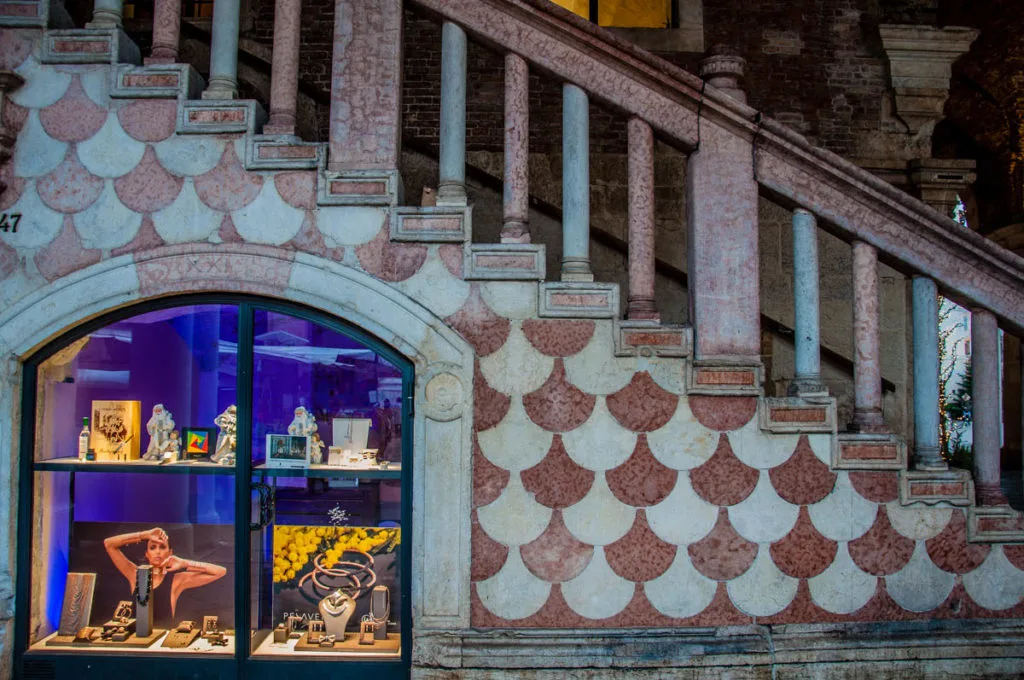
Yey! It’s Italy after all. Land of fashion, artisans, and exquisitely handmade goods.
You will be spoiled for choice in terms of fashion stores, artisan boutiques, and even cute deli shops.
Shopping in Italy is akin to a cultural experience thanks to the local art and craft traditions. Plus, the country is the birthplace of some of the most refined and/or well-known companies in the world.
Make good use of a rainy day in Italy by visiting exquisite artisan studios and shops where everything – from glass beads and jewellery to paper and lithographs – is handmade following centuries-old techniques.
Alternatively, escape the rain by taking refuge in one of Italy’s huge shopping centres, where you can find all sorts of brands – from the cheap and cheerful to the high fashion ones.
There is also a proliferation of outlet villages where you can shop for branded products at significant discounts. Here are a few of the biggest and most well-known ones to get you started:
- Serravalle Outlet Village with more than 230 shops in Piedmont;
- Franciacorta Outlet Village with more than 160 boutiques in Lombardy;
- Noventa di Piave Designer Outlet with over 150 shops in Veneto; and
- Fidenza Village with more than 120 boutiques in Emilia-Romagna and with easy access from Lombardy, too.
Italy has much to offer in terms of unique souvenirs and wonderful products, so take your time to explore. Before you know it, you may end up purchasing several litres of extra virgin olive oil from a small farm, handmade lemon-scented soaps from Lake Garda to last you a year at least and more Venetian beads than you can wear in your lifetime.
The best bit is that many of the Italian craftsmen and artisan workshops can pack and post your purchases abroad, so you don’t have to lug it all on the plane with you.
With Kids: Some shopping centres in Italy, like Vicenza’s Piramidi in point 7 above, have a paid-for indoor playcentre. In other words, this is a safe place with lots of toys and play equipment where you can drop your child off while you shop. Check in advance if this is the case for the shopping centre/outlet village you plan to visit.
Another option here is to visit an artisan’s studio with your kids so that they can watch the artistic process and see how things are made by hand.
Some Italian craftsmen even organise short workshops giving your kids a chance to decorate a Venetian mask, make sheets of fine paper or even try their hand at pottery.
9. Stock on Food from a Covered Market
Many Italian cities and towns have specially built covered markets where trade has been going on strong for centuries.
For example, if you find yourself in Venice, Bologna, Florence or Genoa, make sure that you visit, respectively, Rialto Fish Market (Venice), Mercato delle Erbe and Mercato di Mezzo (both in Bologna), Mercato Centrale (Florence), and Mercato Orientale (Genoa).
No matter what’s the weather outside, there you will be able to buy authentic Italian food, locally-grown fruit and veg, and even fresh seafood to cook at your accommodation in Italy.
Another thing you can do in a covered market on a rainy day in Italy is to have lunch or dinner. Expect delicious local food prepared and served by the traditional delis and eateries huddled inside or around the market’s building.
When in Padua, don’t miss Sotto Il Salone – allegedly, the oldest food shopping centre in Italy. This is the arcaded area on the ground floor of the splendid medieval town hall Palazzo della Ragione. It has been housing Padua’s finest delis, cafes, and food shops for the past 800 years.
Click on the following links for more first-hand information about Italy’s covered markets:
- Italian Markets – 11 Types of Markets You Can Find in Italy
- Padua’s 800 Years Old Market
- Exploring Venice – Rialto Fish Market
- Point 4, Mercato di Mezzo – Bologna, Italy – 10 Stories to Introduce You to the Fat Lady of the Italian Cities
With Kids: Food shopping in a covered market on a rainy day in Italy can be a lot of fun for kids. Give them a task. For example, to spot an unusual fish or a new for them vegetable. Allow them to help you choose and bag fresh fruit. Buy small portions of many different foods and have a tasting session thus opening your kids’ food horizons and allowing them to learn more about Italy.
10. Take a Cooking Class
Spending a few hours learning how to cook authentic Italian food is always time well invested. Especially, when it rains or snows outside.
You cannot fully enjoy and understand Italy without enjoying and understanding its food. So, seek to improve your knowledge of it with the help of an experienced local foodie.
There are many cooking classes and courses you can do all over Italy in any weather. Ask for recommendations at your hotel, the local tourist information office or a trusted Facebook travel group. A very active group with lots of good, first-hand tried and tested suggestions is Traveling to Italy.
Alternatively, use a search engine for travel tours like Viator or GetYourGuide. They offer a wide range of cooking experiences in Italy. From a cooking class in a Tuscan farmhouse coupled with a visit to a local food market to a gelato-making class in Verona, you will be spoilt for choice.
With Kids: There are many cooking classes in Italy that are specifically tailored to children. For ideas on where to start, have a look at the three suggestions below.
If you are planning to visit Vicenza as part of your Italian trip, then check out the cooking classes for kids held by Il Mondo di Bu. They are very popular. The lady who runs them also holds cooking demonstrations in shopping malls, historic palaces, and on an Italian TV channel.
11. Hire a Guide for a Private Tour of the Best Inside Places
A great way to make the most of your time in Italy (especially when the weather is not at its usual Italian best) is to hire a private guide and ask them to show you all of the best inside (figuratively and, well, literally speaking) places.
Private tour guides are people with an intimate knowledge of Italy’s history, art, and sights. They have spent years accumulating precious information. Plus, they have undergone stringent training and are officially registered. You can book them and tell them exactly what you want to see or what your limitations are. ‘Not getting wet in the rain!’, sounds like a reasonable requirement.
For Venice, I can recommend the services of Luisella Romeo from See Venice and Erika Cornali from When in Venice. Alternatively, have a look at this blog post for more suggestions:
For the rest of Italy, use the search function on this website GTI – Guide Turistiche Italiane. It’s in Italian but with a little help from Google Translate, you can find a great local guide who speaks just your language.
Something else to keep in mind is that many museums, villas, palaces, and other places of interest dotted all over Italy organise regular guided visits to their historical collections and premises. Check the website of the landmark you are interested in for up-to-date information about the tours’ starting times and cost.
With Kids: Private tour guides can tailor your itinerary to suit kids of any age and interest. Just mention your specific requirements to them in advance.
Many Italian museums and galleries also organise workshops and happenings specifically for children. A very popular one is the Kids Day event at the Peggy Guggenheim Collection in Venice. It takes place every Sunday and it is for kids from 4 to 10 years of age. It’s absolutely free, however, an advanced online booking is required.
Otherwise, check the websites and the Facebook pages of the different museums and places of interest in Italy for their forthcoming events for children.
12. Walk Under the Porticoes
And see how far you can go before you have to step out in the rain.
Italian cities have the fabulous advantage of porticoes. In other words, these are pavements with a ceiling! Porticoes allow you to hide from sudden downpours while you keep walking to your destination.
You will find short and long porticoes in every Italian city and town.
Bologna in Emilia-Romagna, Turin in Piedmont, and Padua in Veneto are the three Italian cities with the longest total length of porticoes. Bologna has more than 38 km of porticoes in its historic centre, Turin – 18 km, and Padua – 12 km. At the same time, Padua is second after Bologna in terms of the correlation between the length of its porticoes and that of its streets.
The tradition of building porticoes in Italy is ancient. Nowadays all over the country, you can find porticoes of many different eras and styles: Romanesque, Gothic, Renaissance, Neoclassical, and even several modern ones.
Porticoes are really useful both when the weather is bad and when the sun is burning you to a crisp. Being able to hide from torrential rain or a scorching sun while still walking to your destination is pure Italian luxury.
In fact, such is the historic and architectural importance of Italy’s porticoes, that the ones in Bologna became a UNESCO World Heritage Site in 2021.
With Kids: Challenge your kids to try to walk the longest distance without having to leave the shelter of the porticoes. Reward them with a hot chocolate with whipped cream or a large gelato (yes, gelato is eaten in Italy no matter the season or the weather!).
13. Visit Italy’s Historic Coffee Houses
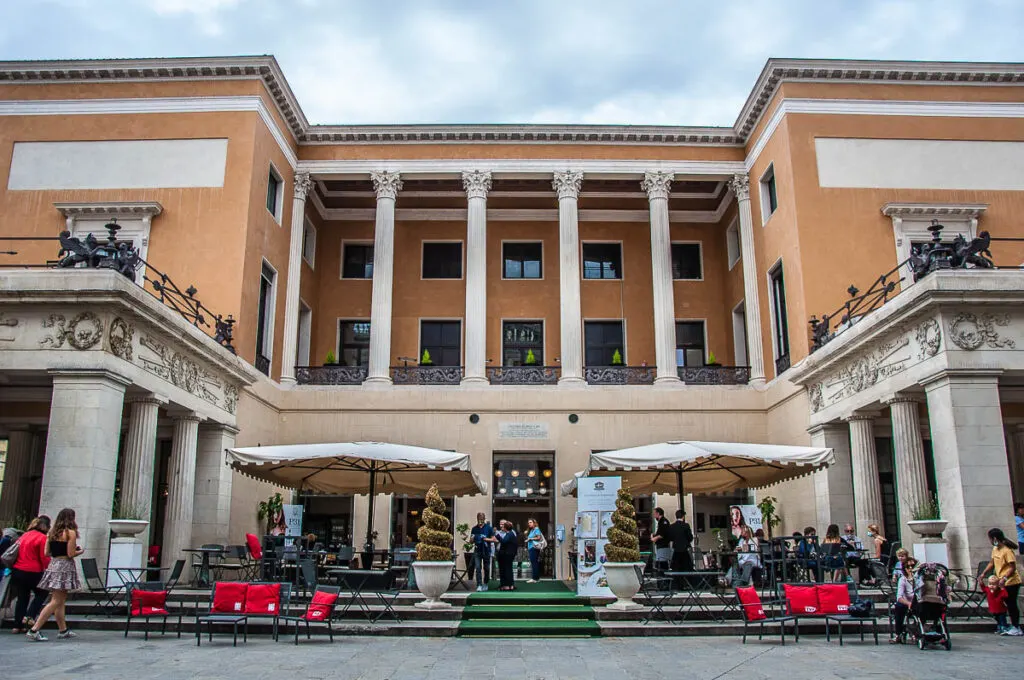
A rainy day in Italy is a perfect excuse to spend some time exploring the country’s historic coffee houses.
While the rest of the world has to rely on large multinational chains serving huge coffee drinks liberally diluted with milk, Italy has a number of exquisite cafes that date back to the first arrival of coffee in Europe.
To get you started on your exploration of the Italian coffee culture, here is a shortlist of some of the most well-known historic coffee houses in the country:
- Caffe Florian, Venice – founded in 1720. This is the oldest cafe in Italy in continuous operation.
- Caffe Fiorio, Turin – founded in 1780. A historic coffee house which has conserved Turin’s atmosphere and traditions. This is also where you can taste the traditional for Turin bicerin – a hot drink made of espresso, drinking chocolate, and whole milk.
- Caffe Bontadi, Rovereto – founded in 1790 as a coffee-roasting business, nowadays it still roasts coffee as well as having its own historical coffee house, a coffee museum, and a barista academy.
- Caffe Pedrocchi, Padua – founded in 1831. Used to be known as the ‘cafe without doors’ as it was open non-stop day and night. Come here for Pedrocchi’s speciality – a shot of 100% Arabica coffee with mint syrup, whipped cream emulsion, and a dusting of bitter cocoa.
- Gran Caffe Gambrinus, Naples – founded in 1860. A stunning belle-epoque coffee house which throughout the centuries has also served as a creative hub for renowned intellectuals, artists and journalists.
Come rain or shine, from Naples, Florence, and Rome to Turin, Padua, and Venice, make sure that you visit at least one of Italy’s historic coffee houses during your stay here. It’s one of the best ways to get in touch with the country’s centuries-old traditions of excellent coffee.
Read more about it here:
- Coffee in Italy or 101 Facts about Italian Coffee Culture
- 19 Rules of Italian Coffee Culture or How to Drink Coffee Like an Italian
- 21 Types of Italian Coffees and How to Order Coffee in Italy Like a Local
With Kids: A historic coffee house in Italy is a great place for kids, too. This is where you can get them a nice cup of thick and gooey hot chocolate, a scoop or three of handmade gelato or a piece of cake or another dessert which they will keep talking about for years.
Make a visit to an Italian historic coffee house a family event and treat your significant other and your kids to something really special – the opportunity to have delicious food and drinks in elegant surroundings.
14. Eat Local at a Sagra
On a rainy day in Italy, one of the best things you can do is to get to eat some authentic local food surrounded exclusively by Italians.
A great place to do this is a sagra (pl. sagre). A sagra is a food festival designed to promote a typical local product like a rare locally-grown vegetable, a particularly splendid type of meat/fish or even truffles.
Have a look at these two blog posts to get an idea about what Italian sagre stand for and how they are organised:
Otherwise, at a sagra, you eat, drink, take part in a tombola and then listen to live music and even dance. It’s all very quaint, very relaxed. Food costs little, it’s served in single-use plates, yet it tastes superb. Kids play and run around. Old couples waltz together. It’s a great insight into the Italian way of life.
So, instead of shutting yourself in your hotel room at night just because it is raining outside, be brave and head to a local sagra to sample some of the best food in your life and to enjoy an evening in the company of the locals.
With Kids: An Italian sagra is a great place to introduce kids to new foods. As the dishes served are usually very inexpensive, get a variety of plates so as to give your children a chance to taste different authentic flavours and textures.
15. Sample Dozens of Cakes in an Italian Patisserie
Count me biased on this one but Italian patisseries have some of the best sweets, cakes, pastries, and cookies in the world. It’s pure sugar heaven!
The best bit is that the ever so conscious about their weight Italians make their dolci quite small in size. Tiny even! So, you can have quite a few and still be far, far off the calorie intake that a big slab of English cake provides.
You don’t need any excuses to eat more than one. Try three, five or ten, if you like. Call it ‘cultural experimentation’. Call it anything. Italian desserts and cakes need to be experienced.
Hence, if you get caught by the rain in Italy, head over to the nearest cafe/patisserie and sample their desserts to your heart’s and belly’s content. Take your time! Enjoy!
Have a look at this blog post to see what a traditional Italian patisserie looks like:
It takes you on a visit to a historic pasticceria in the Northern Italian city of Vicenza. Its owner also reveals some of the traditions and secrets behind Italian and Venetian desserts.
With Kids: What can I say?! Kids will totally love you if you take them to an Italian patisserie and let them eat their way through the colourful desserts on display. Rain or not!
16. Go Underground
Rain comes from above, so to escape it, head underground.
As luck would have it, some of the most interesting sights in Italy are, indeed, under the ground. From beautiful natural caves to Etruscan tombs and ruined Roman villas, you will find that Italy’s underground world is almost as rich as the one above.
Some of the things you can see underground in Italy are Roman remains, tunnels and trenches left from the two World Wars, as well as whole underground cities. Add to this the many natural caves dotted all over Italy.
Take, for example, the stunning Frasassi Caves in the Central Italian region of the Marche. Discovered in 1971, this karst cave system has a series of breathtaking rooms. One of them – the so-called Ancona Abyss – is so cavernous that Milan’s Duomo can fit inside it without any problems.
The land of the Marche, Italy also hides deep beneath the surface several man-made facilities. In the towns of Fermo, Camerano, and Fano you can explore some of the most intriguing underground structures in Europe.
In the town of Fermo, you will find the largest ever Roman cisterns (in terms of their surface area). They were built in the 1st century AD. The cisterns can still be visited. They comprise 30 rooms divided into three lines and have an area of 2200 sq. m.
Camerano is a small town next to Mount Cornero and the Adriatic Sea. There you can visit a mysterious underground town which was built in ancient times by the Picentes tribe. The galleries, tunnels, and niches here are decorated with bas-reliefs, friezes, and religious symbols.
The town of Fano in the Marche, Italy is the modern-day embodiment of what originally was the Roman settlement of Fanum Fortunae. There are many Roman relics here, many of which are beneath the surface of the town’s infrastructure. You can go on a guided tour of the underground archaeological area and see such exciting things as the ruins of the Roman amphitheatre and the Roman marketplace.
In Vicenza don’t miss the Criptoportico Romano – the preserved gallery of a Roman villa which is now several metres underground. Another great place below Vicenza’s surface is just underneath the city’s Duomo. The Diocesan Museum organises guided visits to this archaeological area with Roman ruins which are very interesting.
If you have an interest in more recent events, try visiting Monte Grappa – an iconic place in the Italian war history. There, rain or not, you can explore an incredibly long tunnel which had been excavated in the hills during the First World War.
With Kids: In general, most kids love exploring what’s underground. If this will be your kids’ first visit to an underground place though, try preparing them for the experience.
For example, you can gently explain to them that the light may be rather dim, that it may be wet or slippery and that you will be part of a group and need to keep up with the group at all times. It’s a good idea to emphasise that touching is not allowed. Especially if you are visiting a cave where thousands of years were needed for the beautiful but fragile stalactites and stalagmites inside to grow.
You know your child best so you can decide for yourself if they will enjoy a visit to an underground place or not. Personally, I wouldn’t take my child into catacombs but caves that are open for tourists are fine with me.
17. Practise Riposo
Riposo is the long extended lunch break that is the norm in Italy. Riposo is an integral part of local culture and if you find yourself outside of the most touristy Italian places you will soon come to experience it for yourself.
Shops shut for, on average, three hours each afternoon. Often, smaller museums and lesser-known sights also follow suit.
It really is a special type of disappointment to travel all the way in the rain to see something you have set your heart on, only to arrive in the middle of its traditional riposo.
The best way to beat riposo in Italy is to join it. Especially when it rains. There is nothing like taking a short nap in your snug hotel room when the skies are throwing buckets of water outside. After an hour or two, you will be all refreshed and ready to explore. Plus, everything will be open again just when you are there to see it.
If you want to learn more about Italian riposo and how it works, have a look here:
With Kids: Riposo is a great thing when you travel with a baby or a toddler. They can have a nice little snooze with you while the rain continues outside.
Slightly older kids may hate the idea of having to sleep or relax in the afternoon. They may much prefer it though to being dragged from shop to shop or from museum to museum on a rainy day in Italy.
18. See the Latest Blockbusters
Italians love to dub films assigning the same voiceover actor to the same Hollywood heartthrob for all of their respective careers. This is why, when you put the TV on in Italy, you end up listening to famous actors speaking perfect Italian.
As luck would have it though, in some Italian cinemas you can watch a film in its original language. If you see a VO or Versione Originale beside the film listing, this means that the film is going to be subbed (instead of dubbed), hence you can listen to its original soundtrack.
Film listings are published in the Italian daily newspapers. Plus, you can check a website like Trovacinema (in Italian but easy to navigate and understand) to see what’s being shown near you.
With Kids: Unfortunately, kids’ films are usually completely dubbed in Italian. It is not impossible to find a kids’ film being screened in its original language but it will require more research and even travelling further away to reach the respective cinema.
19. Attend a Musical Performance
Italy is the land of music so treat any rain (or snow for that matter) as the perfect opportunity to enjoy a musical performance here.
First of all, don’t miss a chance to visit the Italian historic opera houses. From La Fenice in Venice and Teatro alla Scala in Milan to Teatro dell’Opera in Rome and San Carlo Theatre in Naples, this is where you can listen to world-class singers in lavish surroundings.
You can also visit these beautiful landmarks during the day and tour their concert halls and premises to learn about the role they’ve played in the history of music and opera. La Scala also has a very interesting on-site museum.
In addition, many churches in Italy regularly hold free or very reasonably priced concerts, too. The Church of St. Paul’s Within the Walls in Rome, for example, stages performances of La Traviata and concerts of opera arias.
Finally, many concerts and music festivals are held all throughout the year all over Italy. No matter the season and the music you may be interested in, you are bound to find a venue nearby to enjoy a performance by a worldwide known band or a highly accomplished musician.
With Kids: Introducing kids to music as early as possible is a gift that they will cherish their whole lives. Even if you wouldn’t consider taking your unruly brood to a three-hour long opera performance in Italy, there are other easy ways to immerse them in music during your visit to the bel paese.
Museums dedicated to music and famous composers abound in Italy. A visit to one or a few of them is a great activity when it’s cold and wet outside. For example, don’t miss the Museum of Music in Venice or the Violin Museum in Cremona.
20. Buy an Umbrella
Well! If you can’t beat them, join them.
The thing is that it doesn’t rain that often in Italy at all, but when it does, it pours and you can’t waste a portion of your Italian trip being stuck in your room and waiting for the clouds to move over.
There are many things to do on a rainy day in Italy. One of them is simply to go out and enjoy the beauty of the Italian cities and countryside when they are at their wettest.
Follow the example of the locals and invest in a big umbrella. The most popular umbrellas here are golf-sized and are like a little hut over your head keeping you totally dry.
Take your new Italian umbrella for a walk and marvel at the deserted streets and the lack of crowds. It is the perfect time, really, to sightsee without getting squashed by other eager tourists.
With Kids: You may want to add a pair of wellies to your kids’ attire as the appeal of jumping in the puddles on a centuries-old square never gets old.
21. Keep an Eye on the Events’ Section on Facebook
I am totally in love with the Events section on Facebook. It automatically suggests events which are taking place nearby.
On a desktop computer, you can access Events from your Facebook’s Home page. On a mobile, click on the icon with the three lines in the top right-hand corner of your Home page and then scroll down the list until you reach Events.
Then you can browse through the different events taking place nearby and make your selection based on distance and time frame.
If a rainy day in Italy spoils your sightseeing plans, have a look at Events on Facebook in order to quickly find something fun to do nearby.
With Kids: You can scroll through the many events to see which ones are suitable for children. You can even post a comment on the event’s page to ask the organisers any particular queries you may have.
Getting Ready for a Rainy Day in Italy – Practical Information and Tips
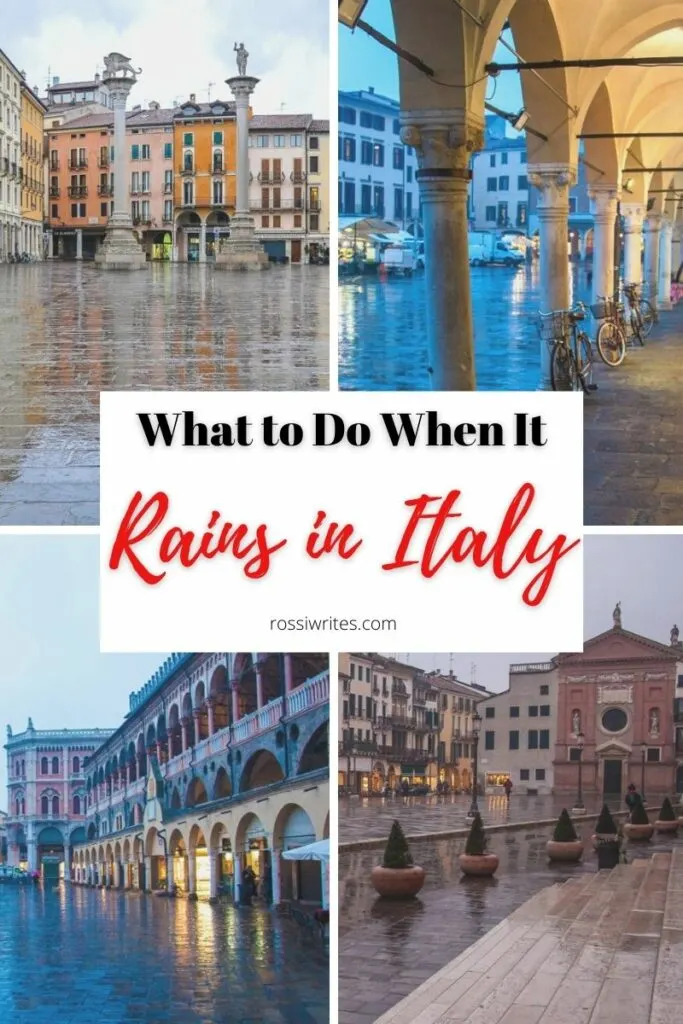
Does It Rain in Italy?
Yes, it does.
On the outside Italy may seem like a paradise where the sun always shines, but believe me, it does rain here. In fact, it was raining right at the moment, when I first decided to write this blog post.
Different parts of Italy have different rainfall. It is a very long country, after all, so there are regional differences in terms of weather between the Italian North and the Italian South. Yet, the wettest month in Italy over the last 20 years has consistently been November with an average rainfall of 101.3 mm.
Rain can also take you by surprise in April, May, September, and October here.
Does it Snow in Italy?
Yes, it does.
Sorry to break your illusions or something. It does snow in Italy, especially in the mountains in the North and the Centre of the country. On very rare occasions, it even snows in Sicily (I mean all over the island, not just on top of its mountains). It’s more like white dust that disappears rather quick, but still…
When it snows in famous Italian cities like Venice, Florence, and Rome – which, admittedly, doesn’t happen that often at all and the snow is often gone within a day or two – don’t be surprised if suddenly all you may want to do is to go outside and take photos of famous landmarks under a blanket of snow to post on social media.
I may have done just this on a couple of occasions. In fact, just look at the photo above. Snow in Venice!
Where to Check the Weather Forescast for Italy?
I like using an Italian weather website called Meteo.it. If you prefer, you can use any other well-known weather service like BBC Weather, for example.
In addition, Climates to Travel is a very useful resource providing you with detailed information about Italy’s climate and historic average temperatures.
What Is the Rain Etiquette in Italy?
Italians like using golf-sized umbrellas to shield themselves from the rain.
These can be quite inconvenient on a narrow pavement when you have to pass by someone holding an equally large umbrella. Still, I love these huge umbrellas for the protection they provide from the rain for the whole of your body and bag. Huddled underneath one, I can happily go for a long walk in the rain through empty streets deserted from tourists and locals.
Yes, locals don’t like the rain too much. Apparently, I’ve been told, Italian ladies don’t like the rain messing up their carefully coiffed hair. Also, I haven’t seen people here using waterproofs on the same scale as in England. Mostly, when it rains, people here tend to stay in (based on my personal experience).
You can see one very curious sight on a rainy day in Italy: cyclists holding with one hand a large umbrella over their head while steering the bike with the other. When we moved to Italy, this was one of the first things here that really made me stop in my tracks.
Italian cyclists often use one hand or no hands at all, so if they need an umbrella open over their head in the rain, who am I to judge?! Although, once, in the rain, we saw a gentleman cyclist who was holding an open umbrella in one hand and scrolling through his mobile phone with the other. His eyes were not on the road. Yet, somehow, he kept pedalling. I judged him a bit but that’s mainly because he came too close for comfort to our car.
There is one more important thing about rain etiquette in Italy. You should never take a wet umbrella with you inside shops, cafes, museums or other such enclosed spaces under any circumstances.
Instead, search for the umbrella stand placed in front of or by the door. Everyone is expected to place their umbrella in it before walking in. Once or twice I have seen plastic sheets being provided for people to put their wet umbrellas in. But in 99.99% of the cases, I have personally witnessed, people leave their umbrellas in a large pot by the door.
It’s incredible, but in six years in Italy, I had my umbrella stolen only once. Of all the possible places, it happened in the former nursery of my child!
Otherwise, I left my umbrella by the doors of countless cafes, museums, shops, etc. and always found it there on the way out. Still, this was my personal experience and I can’t guarantee that your experience will be the same.
In Conclusion
The good news is that it doesn’t rain in Italy that much. However, the months of April, May, and October can bring some significant downpours here. And while November is traditionally Italy’s wettest month, heavy thunderstorms are not an exception during the Italian summers. Especially, in the north of the country.
So, if you are organising a trip to Italy during its rainy seasons, it’s best to have a plan in mind for fun and exciting things to do when the skies open outside.
To help you out, in this blog post I share with you 21 things to do on a rainy day in Italy coupled with tips on how to deal with the rain the Italian way.
It doesn’t matter if you are travelling solo, with your partner or as a family. These personally tried and tested by me rainy day activities and tips are easy to adapt to all personal interests and travel circumstances.
I hope that they will come in very useful if you find yourself in Italy on a rainy day.
Have a wonderful Italian trip no matter what’s the weather outside!
Now, get ready quick for your visit to Italy come rain or shine!
- Consult these guidebooks.
- Buy plane tickets to Italy.
- Book train tickets, bus tickets or rent a car.
- Research accommodation.
- Select tours and activities.
More Helpful Italy Info for You
Best of Italy: Italy Gift Guide, Italian Piazzas, Italian Markets
Italian Food: Best Italian Food Gifts, Cheap Italian Food, Rules of Italian Breakfast, Italian Breakfast Foods
Italian Coffee: Italian Coffee Culture, Italian Coffee Drinks, History of Coffee in Italy
Christmas in Italy: Fun Facts, Things to Do, Italian Nativity Scenes, Panettone, Christmas Guide
Northern Italy: Best Cities to Visit, Major Airports, Reasons to Visit
Lake Garda: Best Towns, Theme Parks, Nearest Airports, Travel Options, Lake Garda with Kids, Malcesine, Riva del Garda, Torri del Benaco
Lake Como: Things to See, Nesso
Veneto: Top Places to Visit, Unique Adventures, Most Colourful Places, Mysterious Places, Most Beautiful Lakes, Reasons to Visit
Lombardy: Best Cities and Towns, Brescia
Friuli Venezia Giulia: Venzone, Most Beautiful Villages
Emilia Romagna: Bologna, Ravenna, Comacchio, Most Beautiful Villages
Marche: 6 Reasons to Visit, Gradara, Frasassi Caves, Temple of Valadier
Venice: Major Landmarks, Essential Tips, Hidden Gems, One Day Itinerary for Art Lovers, Nearest Airports, Boats in Venice, Haunted Venice, Day Trips from Venice, Arco del Paradiso
Verona: Things to Do in One Day, Day Trips from Verona
Thank you for reading! Please, leave me a comment, pin the images or use the buttons right at the top and at the end of this blog post to share it on social media.
For more useful information like this, please, like my blog’s page on Facebook and subscribe to my strictly no-spam newsletter.
